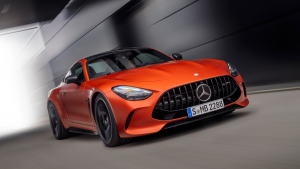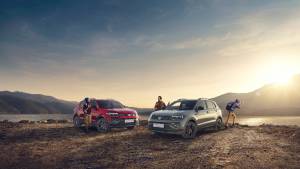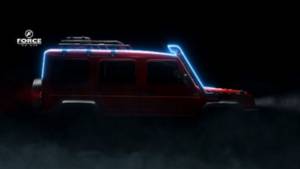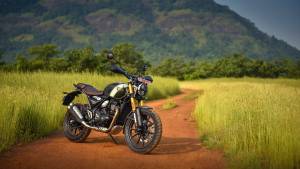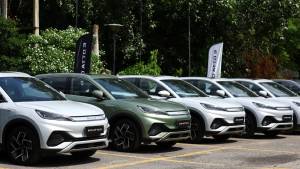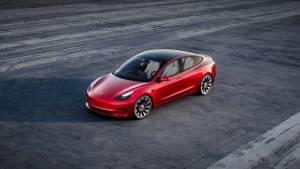2013 Volkswagen Up! first drive
All roads lead to Rome; none however lead to your hotel. As far as chaos goes this is the capital of the world â" congestion is incredible, speeds way too high, streets way to narrow, monuments far too many and Italians drive with an aggression and surprising ambivalence to traffic rules that makes Mumbai's traffic seem sane. That's precisely why we are in Rome, not to see the Colosseum (which has to be on your bucket list), but to battle the chaos of the small car capital of the world with the smallest car in the Volkswagen range.
It was in the 2007 Frankfurt Motor Show where the first Up concept was unveiled. Four years later, on the streets of Rome, the final production car looks remarkably similar to the original concept with clean simple lines that the designers claim even can be sketched by children. The large smiley face gives it a pleasant visage, the wheels pushed to the extremities gives it a solid stance, the bonnet is extremely short and this being VW the lines are crisper and shut lines tighter than other cars in this segment. The main difference from the concept is that regulations have demanded conventional taillamps (rather than the sexy LEDs in the glass tailgate) but it still looks more distinctive from the rear than the front. And though the tailgate is glass it does have a steel frame for durability.
Measuring just 3.54 metres in length the Up is based on an all-new platform which, in time, will spawn many, many variants. Of interest to India is the 5-door Up that will be shown next year running an extended wheelbase to liberate more rear space though it will still only be a four-seater. Not that the Up will need much stretching to make it adequately spacious and even in this 3-door version, grown-ups can squeeze in at the back for short journeys. And the boot space at 251 litres (951 litres with the seats down) is pretty good. Up front, due to the tall-boy stance, high seating position and large glass area the cabin feels airy and much larger than it actually is (which is why you think twice before jumping into those narrow lanes). The space efficiency is such that the driver is never knocking elbows with the passenger and it does feel roomy - a little better than the i10 and way better than the A-star, its two rivals when it does go on sale in India.
The cabin itself exudes an honest no-nonsense approach but with a typically VW focus on quality, finish and that high-quality thud sound you get when shutting the doors. Come to think of it the more you prod and poke the more you wonder where VW have taken cost out of the car. It does have a very basic stereo that can be optioned up with a plug-in info pod that doubles up not only as a navigation screen but also pairs up with your phone and works as a media player. It's a clean, cost-effective and elegant solution but might have to be re-thought for India as it may not stand up to our rough usage. Look more closely at the dash â" notice that there are only two air-con vents at the extremities, again this is something which will have to be re-thought for our hotter climes.
None of which matters really for truth be told this is a far more interesting and fun cabin than the Polo. More surprisingly it turned out to be more fun to drive (within the confines of the city) than the Polo. The small footprint gives it agility and the steering is light and direct making it incredibly chuckable. Visibility is fantastic and once you've got the hang of how traffic flows in Rome great fun can be had with the Up. Again typical of VW the ride is firm but never harsh or crashy and it deals with cobbles and the odd pothole with a maturity you don't usually see on such small cars. Push it in corners and there is more body roll than in a typical VW but this isn't something you will notice while chasing Smarts through back alleys in Rome.
The engine is again all-new, a three-cylinder, 12-valve, variable intake, all-aluminium petrol unit displacing 999cc and available in two power outputs â" the extremely frugal 60 PS (with stop-start and Blue Motion technologies) and 75PS. We drove the latter and while 75PS can only do that much it never felt out of breath in the city and could manage to keep up with fast Autoroute traffic. 0-100kmph takes 13.2 seconds it peaks at 171kmph - crucially it never feels floaty or scarily out of control at that speed. The peak torque of 95Nm is identical on both engines and available from 3000 to 5000 rpm with 90 per cent of maximum torque on tap from 2000 to 6000rpm. This makes for a very responsive engine no doubt helped by the 929kg kerb weight. It is mated to a slick 5-speed transmission that in shift quality is superior to what we get on our Polo.
This new EA211 engine family will also be manufactured in India to make the Up cost-effective. VW are also aware of how horrifically diesel-skewed the Indian market is and the Up, when it comes to India in 2013, will have both a petrol and diesel engine.
The only thing left to sort out is pricing and to get it under the Rs 4 lakh price point to take on the Maruti A-Star and Hyundai i10 a significant amount of re-engineering and cost-cutting will have to be done to the European Up (explaining why it is two years away). It will still be the premium offering in the Micro/Mini segment â" justifiably so considering its interior packaging and mechanicals â" but the quantum of that premium will determine whether VW can put speed breakers on the roads leading to Maruti and Hyundai showrooms.
Related Stories
Top Stories
Latest Videos
Most Popular
- Budget Sportbike Showdown: Kawasaki Ninja 500 vs Aprilia RS 457 vs Yamaha YZF-R3
- Mumbai-Pune Expressway speed restrictions updated
- 2014 Triumph Daytona 675 vs 2024 Kawasaki ZX6R - A Decade of Evolution in Supersport Motorcycles
- 2024 Hyundai Creta vs Toyota Urban Cruiser Hyryder vs Skoda Kushaq comparison review - the hype is real?
- Nissan Magnite EZ-Shift review - is the AMT any good?
